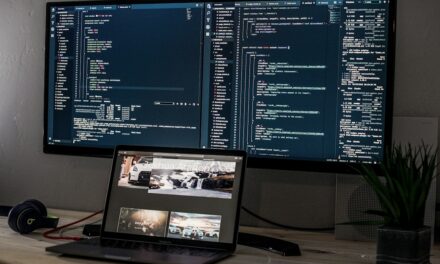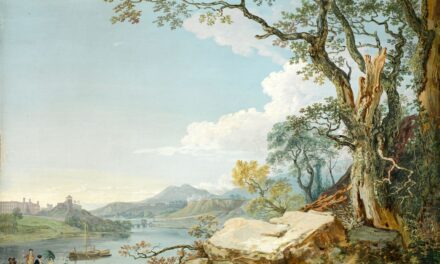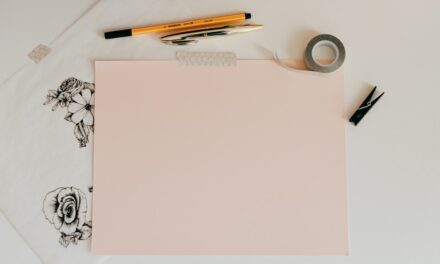Digital painting is a contemporary artistic practice that utilises digital technology as a primary medium for creating artwork. Unlike traditional painting, which relies on physical materials such as oils, acrylics, or watercolours, digital painting employs software and hardware to produce images that can mimic the appearance of traditional techniques. Artists can create their work using a variety of devices, including graphic tablets, styluses, and computers, allowing for a unique blend of creativity and technology.
This form of art has gained immense popularity in recent years, particularly with the rise of digital platforms and social media, where artists can showcase their work to a global audience. The essence of digital painting lies in its versatility and accessibility. Artists can experiment with an array of styles and techniques without the constraints often associated with traditional mediums.
The ability to undo mistakes, layer images, and manipulate colours with precision offers a freedom that many find liberating. Furthermore, digital paintings can be easily shared, reproduced, and modified, making them an appealing choice for both professional artists and hobbyists alike. As technology continues to evolve, so too does the potential for innovation within the realm of digital painting, leading to new methods and styles that push the boundaries of artistic expression.
Summary
- Digital painting is the process of creating artwork using digital tools and techniques, often mimicking traditional painting styles.
- Common tools and software for digital painting include graphic tablets, stylus pens, and software like Adobe Photoshop, Corel Painter, and Procreate.
- Understanding digital brushes and layers is essential for creating depth and texture in digital paintings, allowing for greater control and flexibility in the creative process.
- Techniques and tips for digital painting include using reference images, experimenting with different brush settings, and mastering the use of light and shadow.
- Colour theory plays a crucial role in digital painting, influencing mood, composition, and visual impact, and understanding it can greatly enhance the quality of artwork.
Tools and Software for Digital Painting
Graphics Tablets: A Key Component
Popular brands such as Wacom, Huion, and XP-Pen offer tablets that range from basic models suitable for beginners to advanced options equipped with pressure sensitivity and tilt recognition for professional use. The tactile feedback provided by these tablets closely mimics the experience of traditional drawing, making them an essential tool for many digital artists.
Software Options for Digital Painting
In addition to hardware, the choice of software plays a crucial role in the digital painting process. Programmes such as Adobe Photoshop, Corel Painter, and Procreate are widely used within the artistic community due to their extensive features and user-friendly interfaces. These applications provide a plethora of brushes, textures, and effects that enable artists to create intricate designs and lifelike representations. Furthermore, many software options support customisation, allowing users to create their own brushes or modify existing ones to suit their unique style.
Advanced Techniques and Creative Possibilities
As artists become more familiar with these tools, they can explore advanced techniques such as blending modes and layer management, further enhancing their creative possibilities.
Understanding Digital Brushes and Layers

Digital brushes are fundamental components of digital painting that allow artists to replicate various traditional techniques or create entirely new effects. Each brush can be customised in terms of size, shape, opacity, and texture, enabling artists to achieve a wide range of results. For instance, a soft round brush may be used for blending colours seamlessly, while a textured brush can add depth and character to a piece.
The ability to adjust these parameters gives artists unprecedented control over their work, allowing them to experiment with different styles and approaches without the limitations imposed by physical materials. Layers are another critical aspect of digital painting that distinguishes it from traditional methods. In digital software, layers function like transparent sheets stacked on top of one another, allowing artists to separate different elements of their artwork.
This feature enables greater flexibility in editing and refining compositions without affecting the entire piece. For example, an artist can work on the background on one layer while keeping the foreground elements intact on another. This non-destructive approach allows for easy adjustments and experimentation, making it possible to explore various ideas without the fear of permanently altering the original artwork.
Understanding how to effectively use brushes and layers is essential for any aspiring digital painter seeking to develop their skills.
Techniques and Tips for Digital Painting
Mastering digital painting requires not only familiarity with tools but also an understanding of various techniques that can enhance the quality of artwork. One effective technique is layering colours to create depth and dimension. By applying multiple layers of colour with varying opacities, artists can achieve a sense of realism that mimics traditional painting methods.
Additionally, blending techniques such as smudging or using soft brushes can help create smooth transitions between colours, adding to the overall visual appeal of the piece. Experimenting with different brush settings can also yield interesting results; for instance, using a textured brush can introduce an organic feel to digital artwork. Another important aspect of digital painting is the importance of practice and experimentation.
Artists should not shy away from trying new styles or techniques that may initially seem challenging. Engaging in regular practice helps build muscle memory and improves overall skill levels. Furthermore, seeking feedback from peers or participating in online communities can provide valuable insights and encouragement.
Many successful digital artists emphasise the importance of learning from mistakes; each error presents an opportunity for growth and refinement. By embracing a mindset of continuous learning and exploration, artists can develop their unique voice within the vast landscape of digital painting.
Colour Theory and Digital Painting
Colour theory is a fundamental concept that underpins all forms of visual art, including digital painting. Understanding how colours interact with one another is essential for creating harmonious compositions that resonate with viewers. The colour wheel serves as a useful tool for artists, illustrating relationships between primary, secondary, and tertiary colours.
Complementary colours—those opposite each other on the wheel—can create striking contrasts when used together, while analogous colours—those adjacent on the wheel—tend to produce more subtle transitions. By applying these principles thoughtfully, artists can evoke specific emotions or atmospheres within their work. In digital painting, colour selection is further enhanced by the capabilities of software tools that allow for precise manipulation of hues, saturation, and brightness.
Artists can experiment with colour palettes easily by adjusting sliders or using colour pickers to find the perfect shade for their artwork. Additionally, many programs offer pre-set colour palettes or allow users to save custom palettes for future projects. This flexibility encourages exploration and experimentation with colour combinations that might not be feasible in traditional mediums.
Ultimately, a solid grasp of colour theory combined with the tools available in digital painting software empowers artists to create visually compelling pieces that captivate audiences.
Creating Depth and Texture in Digital Painting

Conveying Texture through Brush Strokes
Employing varying brush strokes can help convey texture; for instance, using rougher brushes for rocky surfaces or softer brushes for smooth skin can enhance the tactile quality of an image. Another technique for adding texture involves incorporating patterns or textures from real-world references into digital artwork. Many artists utilise texture overlays or custom brushes that replicate natural materials such as fabric or stone.
Layering Textures for a Dynamic Visual Experience
By layering these textures onto their paintings, artists can create a more dynamic visual experience that engages viewers on multiple levels. This approach enables them to build complex, multi-layered compositions that invite the viewer to explore the artwork in greater depth.
Mastering Light and Shadow
Furthermore, understanding light and shadow plays a crucial role in creating depth; by strategically placing highlights and shadows within a composition, artists can guide the viewer’s eye through the piece while enhancing its three-dimensionality. Mastering these techniques allows digital painters to elevate their work beyond flat representations into immersive visual experiences.
Digital Painting Styles and Genres
Digital painting encompasses a vast array of styles and genres that reflect the diverse interests and influences of contemporary artists. From hyper-realistic portraits to whimsical illustrations, each style offers unique challenges and opportunities for expression. For instance, realism demands meticulous attention to detail and an understanding of light and form, while abstract styles encourage experimentation with shapes and colours without the constraints of representational accuracy.
Artists often find themselves gravitating towards specific genres based on personal preferences or influences from other artists they admire. Moreover, digital painting has given rise to new genres that were previously difficult to achieve with traditional mediums. Concept art—a genre primarily used in film and video game development—relies heavily on digital techniques to quickly convey ideas through visual storytelling.
Similarly, character design has flourished within the realm of digital art as artists create intricate designs for animated films or video games using software tools that allow for rapid iteration and modification. As technology continues to advance, it is likely that new styles will emerge within the digital painting landscape, further enriching this dynamic field.
Advantages and Challenges of Digital Painting
Digital painting offers numerous advantages that make it an appealing choice for many artists today. One significant benefit is the ability to work in a non-destructive environment; mistakes can be easily corrected without damaging the overall composition. This flexibility encourages experimentation and risk-taking—qualities that are essential for artistic growth.
Additionally, digital artworks can be saved in various formats, allowing for easy sharing across platforms or printing without loss of quality. The convenience of having all tools readily available within software also streamlines the creative process; artists no longer need to set up physical materials or worry about drying times. However, despite its many advantages, digital painting also presents certain challenges that artists must navigate.
One common issue is the potential for over-reliance on technology; some artists may find themselves leaning too heavily on software features rather than developing their foundational skills in drawing or colour theory. Furthermore, the vast array of tools available can be overwhelming for beginners who may struggle to determine which techniques best suit their style or vision. Additionally, while digital art allows for easy reproduction and sharing, it raises questions about originality and copyright in an age where images can be easily copied or altered without permission.
Balancing these advantages and challenges is crucial for any artist seeking to thrive in the world of digital painting while maintaining their unique artistic voice.
For those intrigued by the modern techniques of digital painting, exploring traditional art forms can provide a deeper understanding of artistic evolution. A particularly interesting comparison can be drawn with the classical works of Joseph Wright of Derby, whose mastery in capturing light and shadow prefigures some of the concerns of digital artists today. To appreciate how traditional techniques can inform and enrich digital artistry, consider reading An Introduction to the Painting “An Experiment on a Bird in the Air Pump” 1767-1768 by Joseph Wright of Derby, which delves into Wright’s use of lighting, a fundamental element that remains crucial in digital painting as well.




